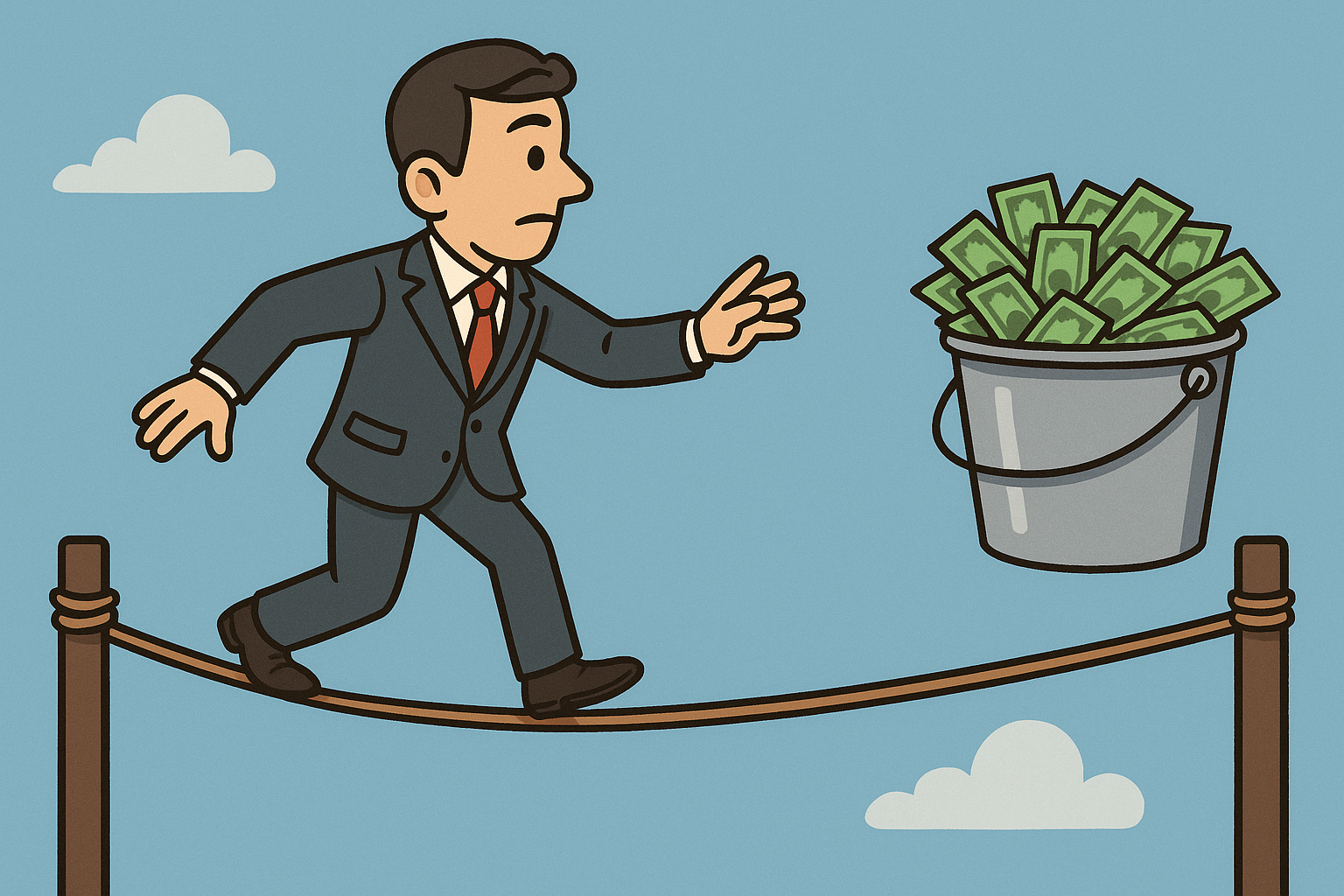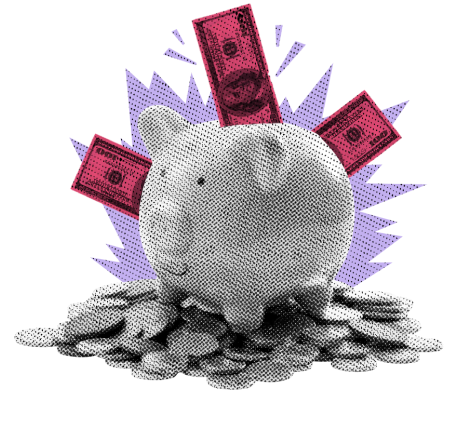The best things in life aren’t free. Especially not in markets.
KEY TAKEAWAYS
-
Risk and return are positively correlated—more risk means higher potential returns
-
Markets have experienced major drawdowns, yet still delivered excellent long-term gains
-
Standard deviation and volatility are commonly used measures of investment risk
-
Bonds and traditionally safe assets have become more volatile in recent years
-
A series of upcoming events may increase volatility—and create investing opportunities
MY HOT TAKES
-
Market risk is often misunderstood—volatility is a feature, not a bug
-
Younger investors shouldn’t ignore market history or the power of long-term compounding
-
Fear-driven investing leads to poor outcomes—accepting risk is essential
-
You can’t chase big returns without living through big drawdowns
-
This market is noisy—but full of opportunity if you’re paying attention
-
You can quote me: “More volatile stocks have greater expected returns. Sorry, folks, you can’t escape it.”
The best things in life are free. Well, at least some of them. The 1950s Motown hit, which most of us know from its ‘63 Beatles release, kind-of covers it. If you are one of my younger followers, don’t worry, we Boomers and Gen-Xers got your back. The lyrics start out with… well today’s tagline: “The best things in life are free,” but lyricists Berry Gordy and Janie Bradford quickly rescue your mind from the gutter, declaring that “...you can keep ‘em for the birds and bees,” and finally, the truth is revealed: “NOW, GIVE ME MONEY.” In case you missed it, the revelation is followed by three “that’s what I want.” Got it my bestie Gen-Zs and Millennials?
Ok, now don’t go spiritual star-gazer on me, this newsletter-blog does veer a bit, but money is what it's all about, so bear with me. You work hard to earn money. You save as much of it as you can because you know that it’s prudent. You are told to invest your money so it can work for you while you “work for the man.” Uh-oh, there it is, I did it again. I used a Boomer/Gen-X term. “Working for the man” is, in younger gen terms, being a “wage slave,” or being an “NPC in a 9 to 5.” For my older followers, an “NPC” is a non-playable-character–meaningless, faceless, fodder, second-thought, background, fill-in used in video games. 🤣
Ok, I think we all got the point. We invest our money and we expect returns for that investment. That is as simple as it gets. But is it simple? Obviously not, as we have all learned. Even my Gen-Z/Millennials have lived through some pretty rough economic times: Global Financial Crisis (though you probably were still watching SpongeBob and not in the market yet), COVID, and of course, The Great Inflation (I just invented that), and the profit-killing monetary tightening that followed. For the rest of us, though those events were unique, we have seen similar ones over and over. Popping bubbles (which was not as fun as it sounds), flash crashes, black Monday’s and Friday’s, busts… the list goes on.
All of those events have a common theme. Great excitement leads to volatility, leads to drawdown, and finally, pain. Right now, we seem to be in a perpetual state of volatility. Since COVID, markets have had some really fantastic runs, but also some painful pullbacks. Politics has clearly gotten more… well, political. The news cycles are quicker and more extreme. Everything seems to cost more money but for some strange reason, it doesn’t seem to be affecting folks' desire to spend money. The Fed has its foot on the brakes and the economy is growing. Now, I know that GDP was down last quarter, but that was an aberration of net exports not spending.
Everyone is talking about how expensive stocks are. In fact, everyone has been talking about that for a long time, and yet stocks keep climbing. Then something really crazy happens, like… a life-erasing pandemic, like a war, or like a mass-tariff campaign–all would-be market-killers, and yet markets continue to grow. If you invested in the S&P 500 with the SPY ETF on New Year’s eve day in 2019 and forgot about your investment, it would have grown by 107.7% through last night’s close. Please tell me you are happy with that. That’s an annualized growth of 13.8%, far more than the S&P’s long run mean return of around 10%.
Oh, you are telling me that you're NOT happy with that? Ok, I get it hotshot, you want more. Well, if you invested in the Magnificent-7 stocks over that same period, you would have earned 266.25% during that period (annualized 26.8% / year). Now that’s better, isn’t it? But there is a catch. Those great returns did not come easily. For example, when stocks declined in response to the Fed’s 2021-2023 monetary tightening, the Mag-7 had an almost -50% drawdown, while the S&P had, ONLY a -25% drawdown during that same era.
Is it becoming clear yet? There is a relationship between return and risk. Sorry, to have to come back around to this, but I need you to understand it clearly. Looking back on those drawdowns having dug out and then earned returns beyond doesn’t quite capture the feel of surviving those events. Drawdowns are just one way to describe historical returns. In finance, we use the nebulous term “risk” to describe it, but it is typically measured with standard deviation/error, value at risk, etc. Standard deviation measures how much a stock’s daily return varies from its average daily return. If you are following me, you are realizing that more volatile stocks have greater expected returns. Sorry, folks, you can’t escape it.
We are clearly in a time with lots of volatility–risk. Risk varies amongst different stocks and assets. Even bonds, which were once assumed to be low risk with minimal volatility, have become volatile, and by some measures, riskier than in the past. Markets have become highly sensitive to news events, economic releases, and sentiment shifts. I am sure that, for some of you, this is very disconcerting. But it is important to understand that the risk, or discomfort, you are willing to accept, is directly related to the potential return you will receive. In case you missed it the relationship is positive–more risk, greater expected return.
Indeed we live in risky times, but these risks are providing opportunities to earn great returns in the markets. Turn that around. There are plenty of opportunities to make great returns, but they don’t come for free. If money and returns are the best things in life for you… well, they are not free. Before you decide to just give up and choose the birds and bees, I want you to think it over. You can make money and you can minimize your risk of loss through diversification and diligence. Now, you can’t erase all risk–you would not want to erase all risk, because then you're guaranteed poor returns.
The next few weeks are shaping up to be ones filled with lots of market-moving events, starting with the FOMC meeting which concludes tomorrow. Beyond that comes a target date for a tax reconciliation bill, a number of tariff deadlines, earnings season, a bevy of key economic number releases, and the possibility of the US entering a Middle East conflict. All of them can, and will likely increase volatility, but if you have been following me, you would be saying to yourself, “hm, lot’s of opportunities to get great returns.”
Bringing it back around to the Beatles, because why not. Another one of their famous songs related to money, “You Never Give Your Money,” has some great lyrics like “out of college money spent, see no future, pay no rent.” Well the future is now, and rent is due, so let’s get busy. Don’t sit on the sidelines in fear–invest for the future–if money is what you want.
YESTERDAY’S MARKETS
Stocks gained yesterday as traders looked past the Israel-Iran conflict with hopes that Iran was seeking an end to the fighting. Crude gave back some of its Friday gains lowering fears of inflation. 10-year note yields gained 4 basis points as capital flowed to risk-on.


.png)

